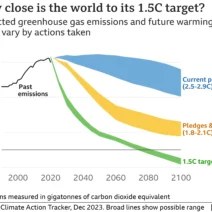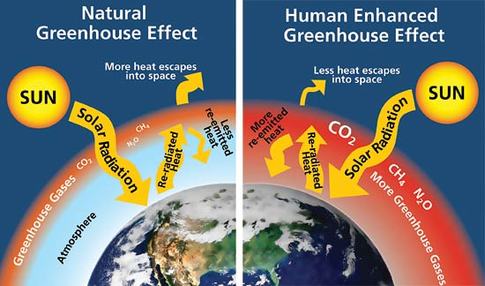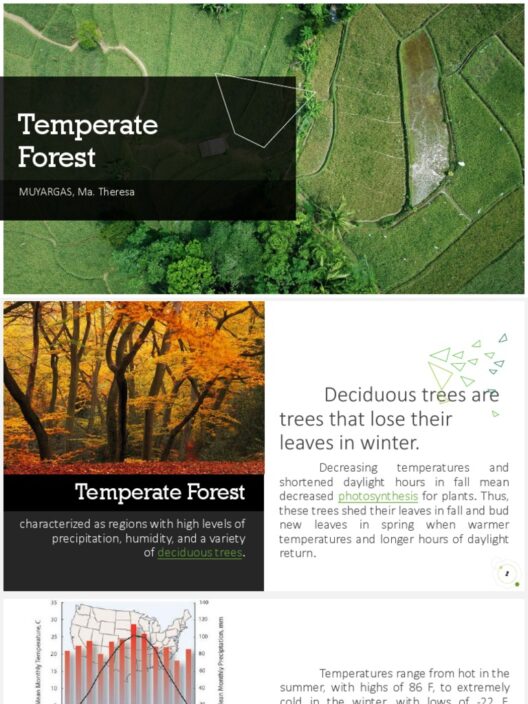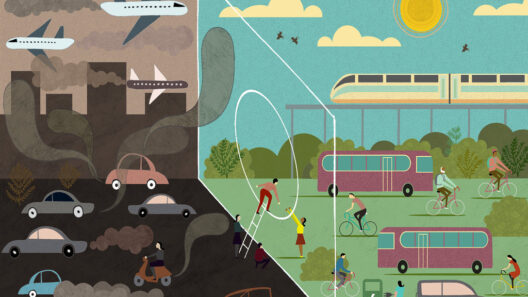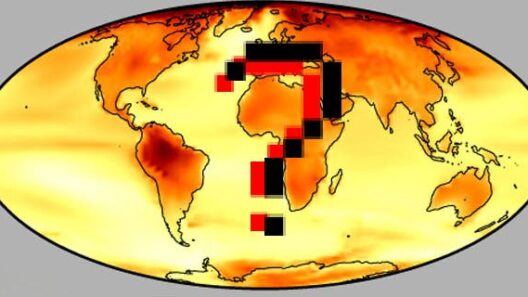As we tread the intricate path of environmental discourse, one might playfully ponder: what if Earth had its own thermostat, and we inadvertently cranked up the heat? This whimsical question invites a deeper exploration into the mechanisms of the enhanced greenhouse effect, a phenomenon at the crux of contemporary climate change debates.
To grasp this concept, it’s essential to first understand the fundamental greenhouse effect. Earth’s atmosphere contains greenhouse gases (GHGs) like carbon dioxide, methane, and nitrous oxide, which function akin to a blanket, trapping heat from the sun. This natural process is crucial, as it keeps our planet’s temperature at a habitable level. Without the greenhouse effect, Earth would be a frigid wasteland, inhospitable to life as we know it. However, what happens when this effect becomes intensified? This results in what we call the enhanced greenhouse effect.
The enhanced greenhouse effect is primarily fueled by anthropogenic activities, particularly the combustion of fossil fuels, deforestation, and industrial processes. These activities have significantly elevated concentrations of GHGs in the atmosphere, amplifying the heat-trapping mechanism. Have you ever considered how your daily energy consumption—from driving cars to utilizing electricity—contributes to this phenomenon? It’s a challenging thought that requires reflection on individual responsibility.
The ramifications of the enhanced greenhouse effect are profound and far-reaching. One immediate consequence is global warming. With an increasing amount of heat retained within the atmosphere, average global temperatures are rising. According to climate scientists, the last century has witnessed an unprecedented increase in Earth’s average surface temperature, culminating in myriad effects across ecosystems and human societies.
A notable manifestation of this warming is the melting of polar ice caps and glaciers. The Arctic region, for instance, is warming twice as fast as the global average. This exacerbates sea-level rise, putting coastal cities at risk. Imagine if your town were threatened by encroaching waters; how would you respond? The stark reality is that millions of people worldwide face this very dilemma.
Furthermore, the enhanced greenhouse effect disrupts weather patterns, leading to extreme weather events. The frequency and intensity of hurricanes, droughts, and heatwaves are on the rise. These disruptions not only threaten human lives but also devastate agriculture, biodiversity, and natural ecosystems. Crop failures due to droughts or inundation from floods can lead to food scarcity, contributing to soaring prices and heightened tension in regions already grappling with socio-political challenges.
To comprehend the enhanced greenhouse effect fully, one must consider the intricate web of interactions within our climate system. Feedback loops, such as the thawing of permafrost releasing additional methane, further exacerbate warming. As these loops activate, the rate of change accelerates, prompting urgent calls for mitigation efforts.
Mitigation strategies can take myriad forms. Transitioning to renewable energy sources, such as solar, wind, and hydropower, represents a significant step in reducing reliance on fossil fuels. Additionally, reforestation and afforestation efforts can help sequester atmospheric carbon, a natural counterbalance to our emissions. However, these actions require collective will and coalescence across governments, industries, and individuals.
Educating society about the enhanced greenhouse effect and its consequences is vital. By fostering awareness, communities can galvanize grassroots movements pushing for policy changes and sustainable practices. Thus, one might ask: how can we motivate action in a world rife with distractions? This poses a challenge for environmental advocates—to inspire a sense of urgency while also engendering hope and collective action.
Moreover, interdisciplinary cooperation will be imperative in addressing this global challenge. Scientists, policymakers, businesses, and everyday citizens must unite, sharing expertise, resources, and innovations. In doing so, a multifaceted approach emerges, blending science with technology, policy with grassroots activism.
As we delve deeper into the intricacies of the enhanced greenhouse effect, it’s crucial to consider our relationship with the planet. We are custodians of this world, and our actions reverberate through generations. The youth of today will inherit the consequences of our decisions and must be prepared to confront the realities of climate change. How can we equip them with the knowledge and tools necessary to navigate this landscape? This inquiry underscores the importance of integrating climate education into curricula worldwide.
Reflecting on the present and envisioning future actions brings a sense of responsibility both individually and collectively. The enhanced greenhouse effect illustrates the delicate equilibrium of our planet. If we continue on our current trajectory, the implications may be dire—challenging us not just with rising temperatures but also with social, economic, and ecological repercussions.
In summation, the enhanced greenhouse effect serves as a clarion call to humanity. Acknowledging its existence and implications marks the first step toward rectifying our course. Through informed action, collaborative effort, and a commitment to sustainability, we can mitigate its effects and strive for a balanced coexistence with our environment. The question remains: will we heed the warning and effect meaningful change, or will we allow the thermostat to remain ever-turned-up, leading us to a hotter, more perilous planet? This decision rests in our hands, today and for generations to come.

